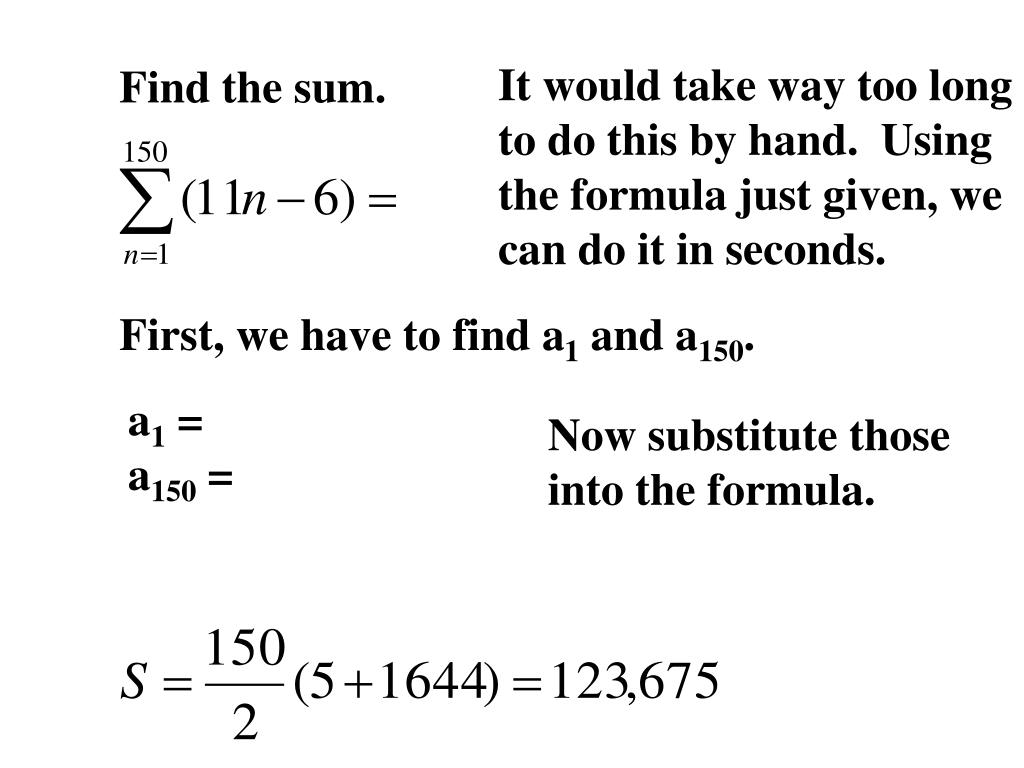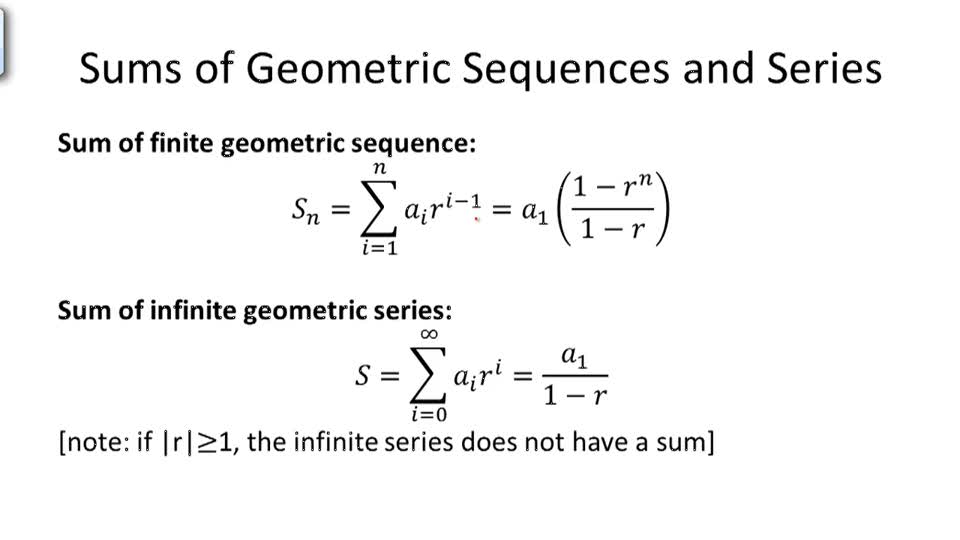

You might also like this article on complex numbers in python.\) so there is no common ratio. To learn more about numbers in python, you can read this article on decimal numbers in python. We have also performed different operations like finding the Nth term and finding the sum of N terms of an arithmetic sequence in python. Finding the sum of a sequence is also a common computer science question. Your total cost increases by the same amount every minute. Even calculating your taxi fare is the sum of an arithmetic sequence. Students will derive formulas for arithmetic sequence terms and partial sums. In this article, we have discussed the basics and formulas of arithmetic sequences. Businesses find the sum of sequences to estimate costs or revenue. Students will model arithmetic sequences with manipulatives and on graph paper. Sum of 50 terms in the arithmetic sequence is: 2600 Conclusion Then the total of the fourth and ninth terms of this sequence equals five times the third term, which mean. SumOfTerms = (N * (2 * firstTerm + (N - 1) * commonDifference)) // 2 A : Give n the sum of the first ten terms of an arithmetic sequence is 145, so S 10. We can calculate the sum of N terms in the arithmetic equation using this formula in python as follows. Subsequently, the sum of N terms of the arithmetic sequence will become N*((2A 1+ (N-1)*D)/2).
Sum of arithmetic sequence how to#
Hence, the average of all the numbers in the arithmetic sequence will become (2A 1+ (N-1)*D)/2. Learn how to write an arithmetic sequence in general terms, using a common difference d and a first term a. As A 1 and common difference D will be given in the program, we can find A N= A 1+ (N-1)*D. Here, we can find the average of all the terms very easily.įor an arithmetic sequence with the first term A 1 and the Nth term A N, the average of all the terms is defined as (A 1+A N)/2. So that we can examine these sequences to greater depth, we must know that the fixed numbers that bind each sequence together are called the common differences. We know that the sum of N numbers will be equal to N * (average of all the terms). Because these sequences behave according to this simple rule of addiing a constant number to one term to get to another, they are called arithmetic sequences. example 3: An arithmetic sequence has a common difference equal to and its 8 th term is equal to. This Python program allows the user to enter the first value, the total number of items in.
Sum of arithmetic sequence series#
Sum of 50 terms in the arithmetic sequence is: 2600Īlternatively, we can also derive a mathematical expression for calculating the sum of N terms of the arithmetic sequence. example 1: example 2: The first term of an arithmetic sequence is equal to and the common difference is equal to 2. Python Program to find Sum of Arithmetic Progression Series Example. We can obtain that by the following two methods. Print("Sum of 50 terms in the arithmetic sequence is:", sumOfTerms) It is sometimes useful to know the arithmetic sequence sum formula for the first n terms. IthTerm = firstTerm + (i - 1) * commonDifference After that, we will add the each term to calculate the sum of N terms as follows. In the for loop, we will first find each term using the formulae discussed above. To find the sum of N terms in an arithmetic expression, we can simply add each term using a for loop. NthTerm = firstTerm + (N - 1) * commonDifferenceġ00th term in the arithmetic sequence is: 201 Sum Of N Terms In An Arithmetic Sequence In Python

Output: Common Difference in the arithmetic sequence is: 2įirst term in the arithmetic sequence is: 3ġ00th term in the arithmetic sequence is: 201Īlternatively, we can directly calculate the Nth term using the formulae as follows. Print("100th term in the arithmetic sequence is:", nthTerm)

Print("First term in the arithmetic sequence is:", firstTerm) For example, 2 + 5 + 8 15 is an arithmetic series of the first three terms. An arithmetic series is the sum of a finite part of an arithmetic sequence. Arithmetic sequence vs arithmetic series. What is the sum of the integers from 1 to 100, inclusive with. This formula allows us to determine the n th term of any arithmetic sequence. the sum of the arithmetic sequence a, a+d, a+2d.+ a + (n-1)d is given by S n/2. Print("Common Difference in the arithmetic sequence is:", commonDifference) Therefore, the 100th term of this sequence is: a 100 3(100) - 1 299. The Nth term will be written as A 1+(N-1)D To find the Nth term of an arithmetic sequence in python, we can simply add the common difference (N-1) times to the first terms A 1 using a for loop as follows. If we are given the first term A 1 and the common difference D, we can write the second term as A 1+D, the third term as A 1+2D, the fourth term as A 1+3D, and so on. Formulas for the sum of arithmetic and geometric series: Arithmetic Series: like an arithmetic sequence, an arithmetic series has a constant difference d.


 0 kommentar(er)
0 kommentar(er)
